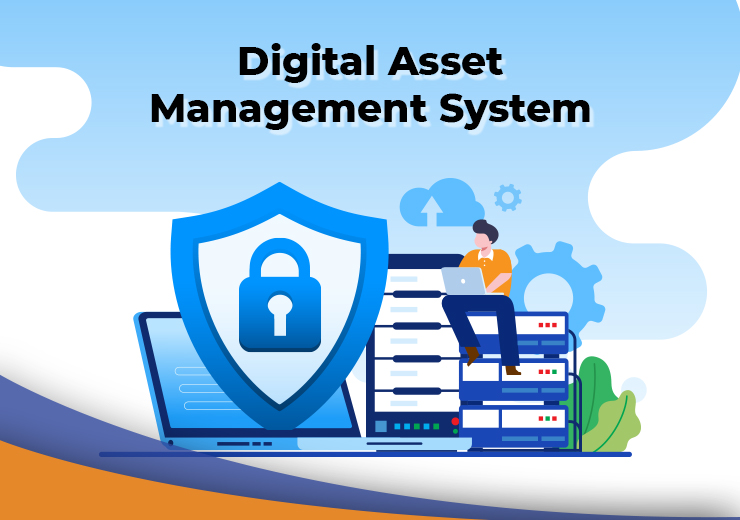
Industry experts have observed that many business owners are taking their online business year on year. Digital assets are essential for any eCommerce business, and equally important are managing and treasuring the business’s digital assets. This brings us to talk about the DAM concept.
Introduction
Before we dive deep into digital asset management (DAM), let us understand what digital assets are. Professionals associated with the marketing and communication domains will be more than just familiar with the digital asset terminology and its usage. Despite the increase in its usage, there is still a shortage in understanding what a digital asset is. In this blog, we will first understand what a digital asset is and dive into the (DAM) Digital Asset Management concept.
What are digital assets?
As its name suggests and going by the definition, a digital asset is any digital material owned by an enterprise or individual. It includes text, graphics, audio, video, and animations.
It is a misconception that digital assets are photographs and videos. However, as the years have gone by and with the increase in digital means like spreadsheets and documents, the definition of digital assets has evolved. With businesses using more digital formats, it must be noted that a portion of the definition of a digital asset is also derived from the value the digital asset brings to the business.
Understanding what can be christened digital asset
Three elements can make a digital file a digital asset. A digital asset must necessarily:-
- Firstly, it must be a digital file owned by an individual, organization, entity, or company.
- Secondly, it must provide value to the individual, organization, entity, or company.
- Lastly, it must be searchable and discoverable (usually with metadata).
Examples of digital assets
Whether we realize it or not, we consciously or unconsciously use digital assets every day. We have listed a few of the most commonly used digital assets.
- Photos
- Videos
- Audio files
- Presentations
- Graphics
- PDFs
- Spreadsheets
- Documents
- Design files
- 3D files
A digital file must not be mistaken for a digital asset.
What is a Digital Asset Management (DAM) system?
In simple terms, a Digital Asset Management (DAM) system helps organizations store, organize, find, retrieve and share their entire digital content catalog in one place. A DAM system provides employees, clients, contractors, and other key stakeholders with controlled access to their entire digital content library. The content library can contain content in images, photos, creative files, video, audio, presentations, documents, and more.
DAM systems vary in size and shape depending on the need
Digital Asset Management (DAM) systems vary in size and shape depending on the need and use. For example, a large retail organization will have a DAM system to manage its e-commerce product imagery. Similarly, a non-profit organization will use a DAM system to share documents with its in-house teams.
DAM systems have gone beyond file storage
Talk about DAM systems, and the first aspect that comes to mind is file storage. However, the truth is that the concept of digital asset management has gone beyond just file storage. Most DAM solutions offer add-on modules such as brand guidelines and project workflow management tools that can act as catalysts to drive efficiencies across the entire digital content lifecycle.
What are the features of a digital asset management system?
When a digital asset management system is used, the business benefits, and those directly or indirectly associated with the business, also benefit. Thanks to the various digital asset management features. Listed below are the key digital asset management features widely being used.
Search
The search feature is probably the most common and widely used digital asset management feature. From images to videos and documents, the digital assets associated with the individual or organization can be searched using the search keywords. While saving a digital asset, tags are used. When a search is initiated, the keywords used in the search attempt are matched with the tags used when the digital assets are saved.
Upload
Still, wondering how this feature made it to our list? We’ll tell you how. Picture this. You are not part of a digital asset management system. You have to upload a digital file. Imagine the file is too lengthy. You will have to spend a reasonable amount of time uploading the digital file. This could be a not-so-pleasant experience. Contradictory to this, you can upload a digital asset in an instant when on a DAM system.
Download
The downloading feature is as essential as the uploading feature in a digital asset management system. Just like uploading a digital asset can happen effortlessly in a DAM system, downloading one can also happen with a mouse click. Furthermore, with advanced features on the DAM system, the user can customize how the download should happen. Say, for instance, the user can select in what format the digital asset must be downloaded and in what size and resolution.
Sharing
Sharing of digital assets using a DAM system can be performed effortlessly. DAM allows users to share digital assets with an intended set of users securely. Additionally, a few DAM systems also permit the user to set the sharing access level with the intended users.
Customization
The digital asset management system is a single platform where all digital assets are stored. A lesser-known fact of the DAM system is that it allows customization. The system can be customized and personalized to match the needs of the individual, organization, or entity. Listed below are the primary customization options that are widely used include:-
- Adding a logo.
- Use your brand colors throughout the system.
- Picking featured images to appear on the home page.
- Create quick links to news pages and company brand guidelines.
- Add your metadata options, including dropdowns, checklists, and keyword pickers.
Integration with other systems
One of the advantages of the digital asset management system is its ability to be integrated with other tools. There are many ways and means to integrate the DAM system with other tools. A few examples of how the DAM system can be paired with other tools and used are from design and content management to reporting and instant publishing.
Now is the time to use a digital asset management system!
Digital asset management systems aim to make routinely performed tasks and activities easy. If the intention is to save valuable production time and effort, now is the time to have one incorporated.
Have the digital assets organized
As the name suggests, they are the no doubt assets of the individual, entity, or organization. Thus, they must be preserved in the right place and organized perfectly. Depending on the volume of digital assets, they can be preserved either in network folders, shared drives, or even on desktops. Regardless of the size, it is ideal to have the digital assets organized such that they can be searched and accessed by the intended user effortlessly.
Final remarks
The dependency on DAM systems is on the rise. Thanks to its features and benefits. An increasing number of business owners, individuals, and organizations embrace DAM systems. If you consider using one, you must make a checklist of what you expect the DAM system to deliver. Also, have a budget in mind. Depending on the need and your budget, you can select a DAM system that will work for you.
If you need help with Digital Asset Management (DAM) systems, you can contact a specialist at Vserve solution.







